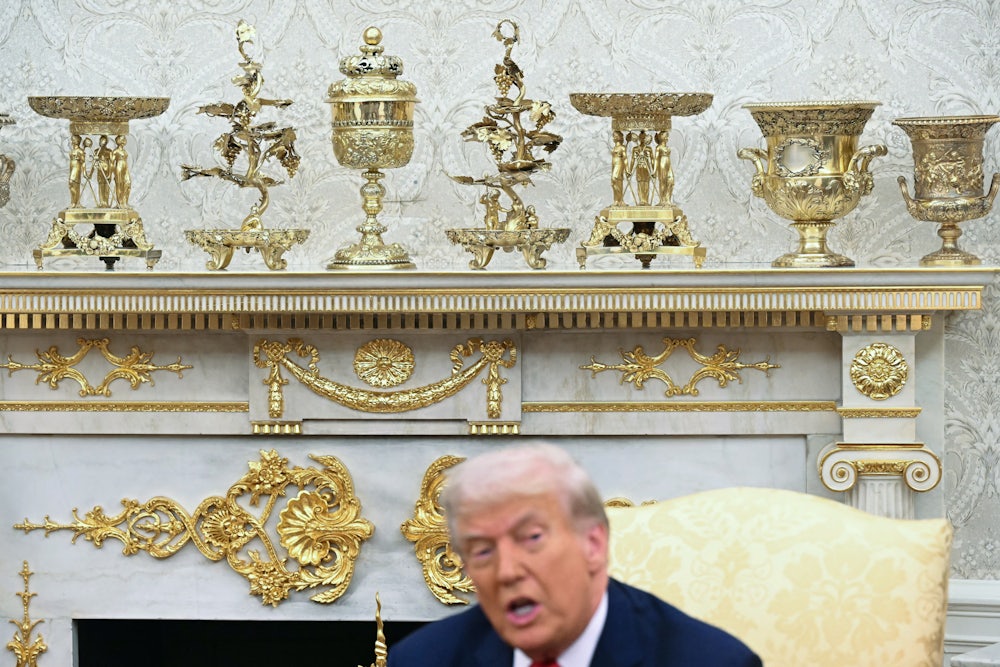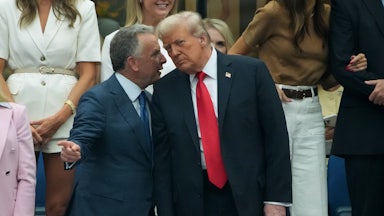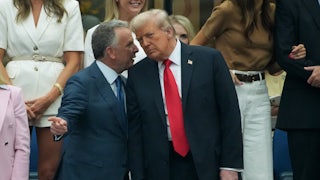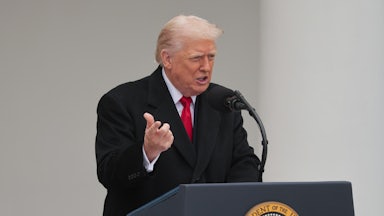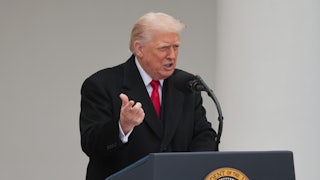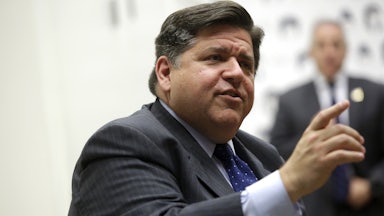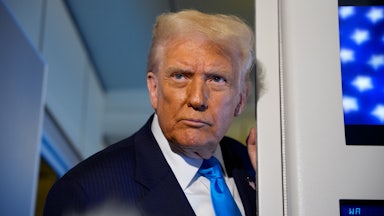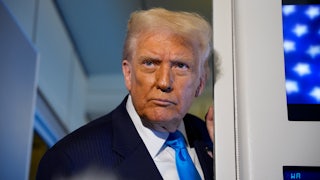If you doubt that we’ve entered a new Gilded Age, check out the price of gold. Since President Donald Trump took office, it’s risen by 50 percent; as I write this, gold futures exceed $4,000 per ounce. If the price rises any higher, we may have to melt down the Oval Office.
This is not a sign of a healthy economy. When gold prices shoot up, it’s a sign that people are losing faith in the dollar, which undergirds the global economy in roughly the same way that gold did before President Richard Nixon took the United States off the gold standard in 1971. Investors call wealth transfers into gold a “debasement trade,” where what’s debased is the asset from which investors flee. In this instance, that’s dollars and U.S. bonds.
My more paranoid self says the whole thing’s a conspiracy engineered by Fox News and Newsmax. I’ve long maintained that Fox and Newsmax ought to be investigated by the Federal Trade Commission as elderscams. These aren’t news networks; they’re transmission belts that use moronic agitprop to sort the elderly population for maximum credulity (median viewer age: 55), then deliver the most gullible to advertisers who sell them dubious diet supplements and retirement strategies. The latter typically involve investing heavily in gold, which is a bad idea. But this week it looks like a good idea.
Don’t worry, I don’t actually believe the price of gold is a conspiracy by right-wing media. Rather, it’s a vote of no confidence in the U.S. economy. Debasement trades usually happen in bad economic times. Gold prices jumped during the Covid recession and the Great Recession of 2007–09. This time they’re rising faster. Gold futures haven’t risen so fast since 1979, when the misery index (unemployment plus inflation) reached 19 percent.
The puzzle here is that most of the underlying economic indicators aren’t that bad. Unemployment is a manageable 4.3 percent (or at least it was two months ago; the shutdown has thus far prevented us getting a number for September), and the consumer price index is a tolerable 2.9 percent. Granted, job creation has cratered; the reason that hasn’t driven up unemployment, according to Federal Reserve Chair Jerome Powell, is that deportations are shrinking the labor market. Also, growth in gross domestic product was slower during the first two quarters of 2025 than during the same period in 2024. But even these unfavorable signs aren’t terrible—yet—especially when compared to the calamities that accompanied the last two surges in gold prices.
What’s causing gold to rise is a falling dollar. After rising during the final three months of President Joe Biden’s administration, the dollar started falling the week before Trump’s inauguration, and today it’s down about 10 percent. We haven’t seen the dollar fall this fast since Iran was ruled by a shah. There are some benefits. When the dollar’s value falls, imports become more expensive and exports become less so. When Trump entered office, the consensus was that the dollar was overvalued. Some people think it still is.
More important is a related indicator, the bond yield on 10-year U.S. Treasury bonds. That’s been rising since the start of this decade, due largely to concerns about the federal deficit. The One Big Beautiful Bill’s doubling of the deficit through tax cuts didn’t help matters. Neither have Trump’s attempts to acquire control of the Federal Reserve or the shutdown of the federal government. The ability of the United States to run large deficits depends on other countries’ willingness to buy our debt. But foreign central banks now hold more gold than they do U.S. Treasuries. That hasn’t happened since 1996.
Why are people buying gold instead of government bonds? Paul Krugman says it may be because
many previously inconceivable possibilities are now quite conceivable given the Trump administration’s radicalism. Runaway inflation hidden by rigged official statistics? Expropriation of the reserves of governments Trump doesn’t like? Forced conversion of foreign assets into 100-year bonds? Given the administration’s record so far, how confident are you that none of these things could possibly happen?
Krugman didn’t even mention Trump’s habit of threatening periodically to default on U.S. Treasuries, a proposition the business press copes with by pretending it doesn’t happen. Perhaps most alarming of all, billionaire oligarchs—which is to say, the people whose livelihood is most dependent on the health of the financial sector—are going long on gold, according to Axios. That’s like a restaurateur deciding not to eat at his own restaurant.
None of this means the economy is on the brink of collapse. The patient is not going to die. But it has acquired the new chronic disease of gold hoarding, and Trump is largely to blame. The “gilded rococo nightmare” of Trump’s Oval Office, in addition to being vulgar and undemocratic, is now becoming a symbol of his gross economic mismanagement.
